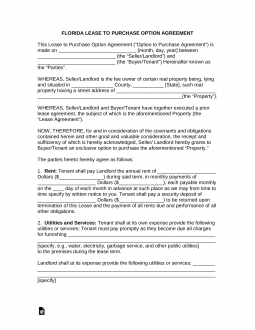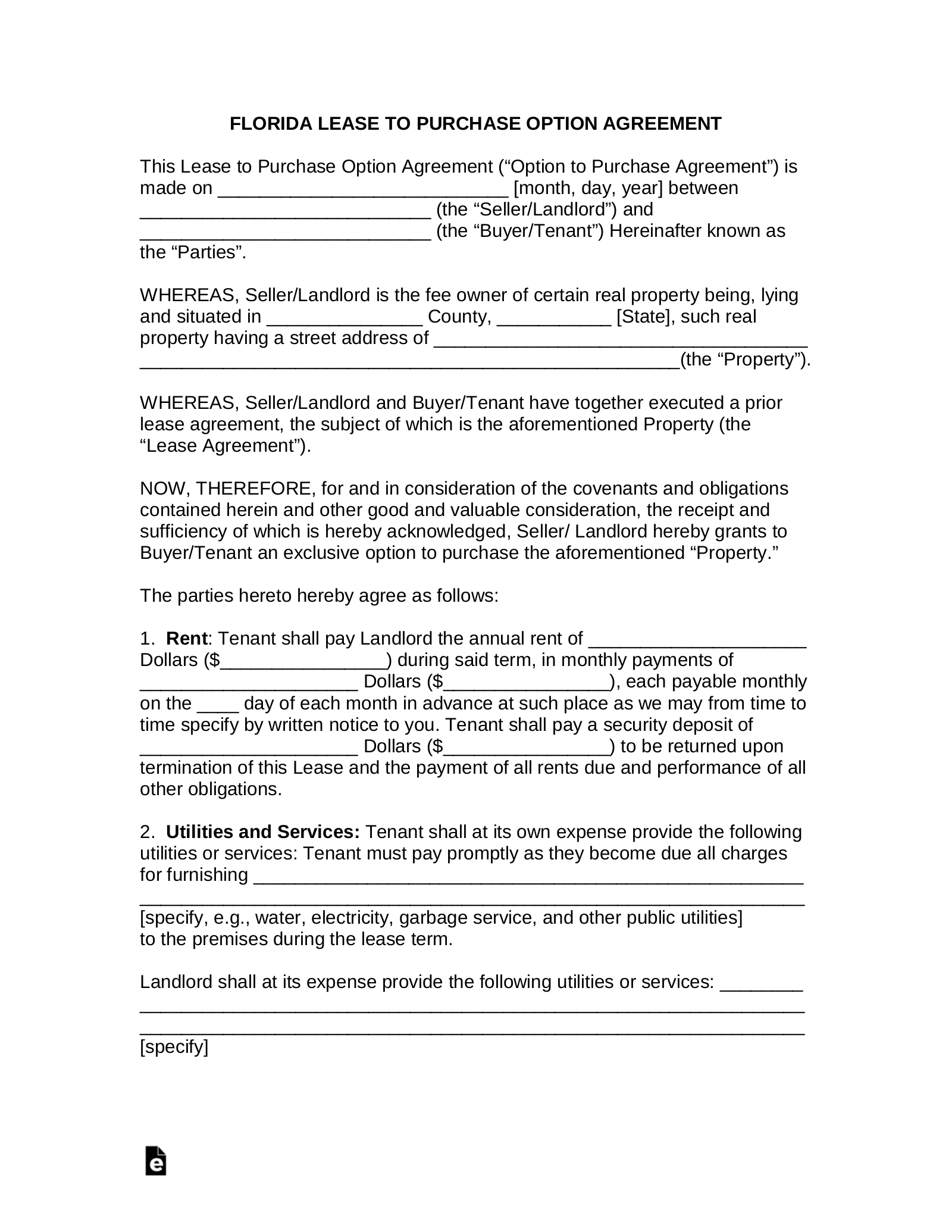Updated April 14, 2023
A Florida rent-to-own lease agreement allows the tenant an option to purchase the property under pre-determined terms. Similar to a standard lease, the landlord will request a financial background check on the tenant. If approved, the landlord will sign a lease and establish the terms for purchasing the property.
Rental Application – Use to obtain a potential tenant’s information and work details.


